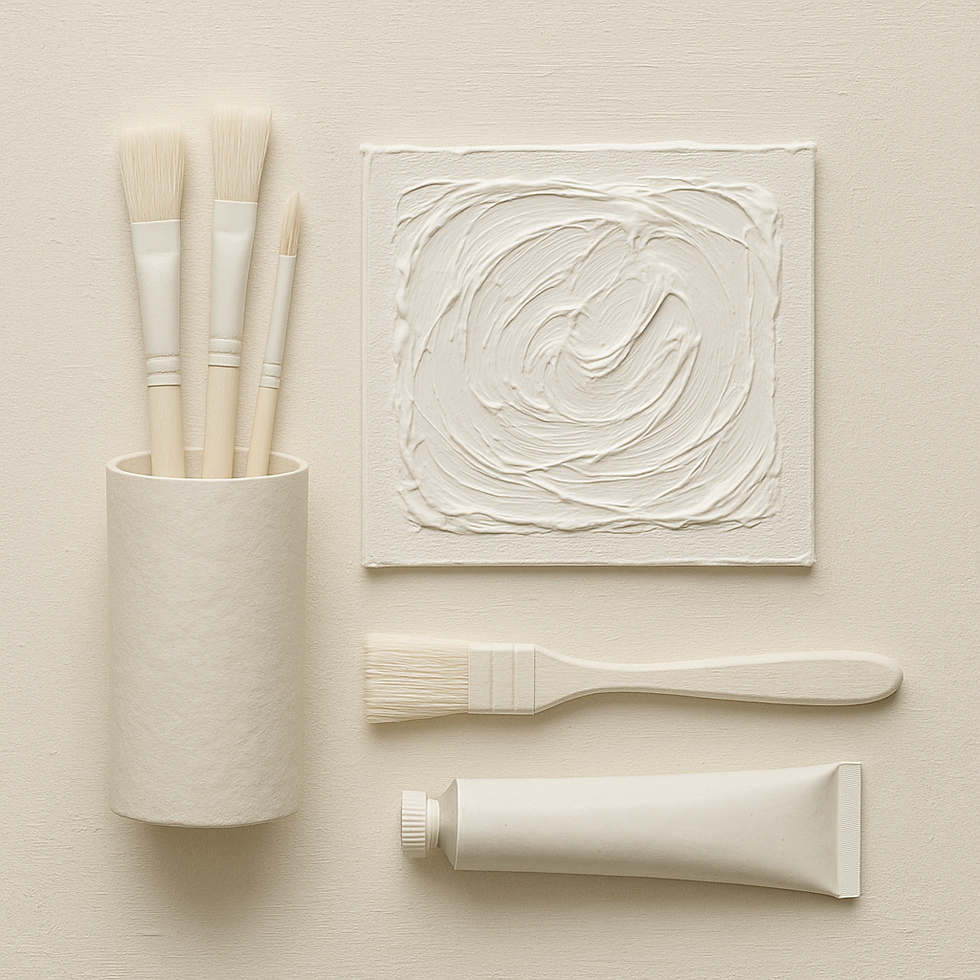NFTs Simply Explained, Revolution or Scam in Art?
- jonathan-pradillon

- May 27
- 4 min read

What is an NFT?
NFTs, or Non-Fungible Tokens, are unique digital certificates of ownership created and stored on a blockchain, usually Ethereum. Unlike traditional cryptocurrencies such as Bitcoin or Ether, which are interchangeable (fungible), each NFT has its own identity—a unique identifier that distinguishes it from all others.
An NFT can be linked to all kinds of digital content: images, videos, music, animations, text—even tweets. However, what the buyer acquires is not always the artwork itself, but rather a link to the artwork (often stored on an external server) and a proof of ownership tied to that link.
In other words, owning an NFT does not necessarily mean owning the copyright or reproduction rights of the work. It's more like a deed of ownership recorded on a public, traceable, and tamper-proof blockchain. This characteristic makes NFTs a revolutionary tool for authentication and traceability in digital creation.
The Rise of NFTs in Art
NFTs made a spectacular entrance into the art world in 2021, with the historic sale of Beeple's work "Everydays: The First 5000 Days" for $69 million. Since then, collectives like CryptoPunks and Bored Apes have become cultural icons.
This technology has disrupted the way digital artists can monetize their work. By removing intermediaries, NFTs allow creators to sell directly to their audiences while benefiting from automated royalties on each resale.
Platforms like OpenSea, Rarible, and Foundation have given birth to a new ecosystem where artists, collectors, investors, and the curious converge. Some traditional galleries are beginning to incorporate NFT works, while fully virtual exhibitions are taking shape in the metaverse.
However, this enthusiasm has also led to a speculative boom, with millions invested in works that sometimes lack real artistic value. This raises a key question: are NFTs safe?
Are NFTs Truly Reliable?
From a technical perspective, blockchain offers a high level of security: once recorded, a transaction is immutable and publicly accessible. The NFT, as a digital object, is thus protected against forgery.
However, not everything rests on the blockchain. Most files linked to NFTs are stored off-chain (on traditional servers), and if those servers go offline, the link within the NFT may become obsolete. Another risk: losing the private key to a digital wallet means irreversibly losing access to the NFTs.
Lastly, there's legal ambiguity around the actual ownership conferred by an NFT. Do you own a work, a license, or just a record? The answer varies depending on platforms and contracts.
NFT Scams
The rapid success of NFTs has attracted many scammers. Some of the most common practices include:
Fake NFTs: counterfeit works sold without the artist’s consent.
Rug pulls: promising NFT projects that disappear after collecting funds.
Phishing: clone sites stealing wallet credentials.
Pump and dump: price manipulation using bots or insider collusion to trap buyers.
Some artists have also seen their digital creations reused without permission, minted as NFTs, and sold. These practices harm the credibility of the space and call for better regulation.
Beware of Fraudulent Offers Targeting Artists
Many artists report receiving flattering messages from strangers offering to buy their work as NFTs for large sums. These messages—often auto-generated or poorly translated—encourage the artist to visit an unknown platform or connect their wallet to a third-party site. These are usually traps designed to:
gain access to their data or wallet
charge fake "minting" fees
collect artworks for unauthorized resale
To protect yourself, it's essential to:
always verify the legitimacy of platforms and users
never connect your wallet to an unverified site
refuse any rushed or high-pressure transactions
consult artist communities or specialized groups before taking action
Caution is key: any offer that seems too good to be true is often a scam.
The Future of NFTs in Art
After the 2021 peak, the NFT market saw a significant correction. Sales stabilized, and the speculative bubble deflated. Yet, use cases continue to diversify: virtual museums, certificates of authenticity, exclusive community access, secure ticketing...
NFTs are also set to evolve technically. Some blockchains, like Tezos or Polygon, aim to be more eco-friendly, reducing the carbon footprint of digital creation.
More than just a fad, NFTs appear to be triggering a deeper transformation in the relationships between artists, collectors, and audiences.
NFTs are neither a cure-all nor a universal fraud. They are an innovative tool, full of potential but also traps. When well understood and properly used, they can empower creators and open up new spaces for artistic expression.
Unconventional art, always in search of new forms, might find fertile ground for experimentation and wonder in this technology. But vigilance remains essential, as every digital revolution brings its share of illusions.
NFT FAQ
What is an NFT in one sentence?
An NFT is a unique digital certificate recorded on the blockchain that proves ownership of a digital asset, such as a piece of art.
Can I own a work of art by purchasing an NFT?
You own a digital deed of ownership, but not necessarily the copyright or commercial rights.
Are NFTs secure?
Yes, technically thanks to the blockchain, but risks exist related to file storage and wallet access loss.
How can I avoid NFT scams?
Use reputable platforms, verify artist accounts, protect your private keys, and beware of too-good-to-be-true projects.
Do NFTs have a future in art?
Yes, provided there is technological evolution, better regulation, and thoughtful use by artists and collectors.




Comments